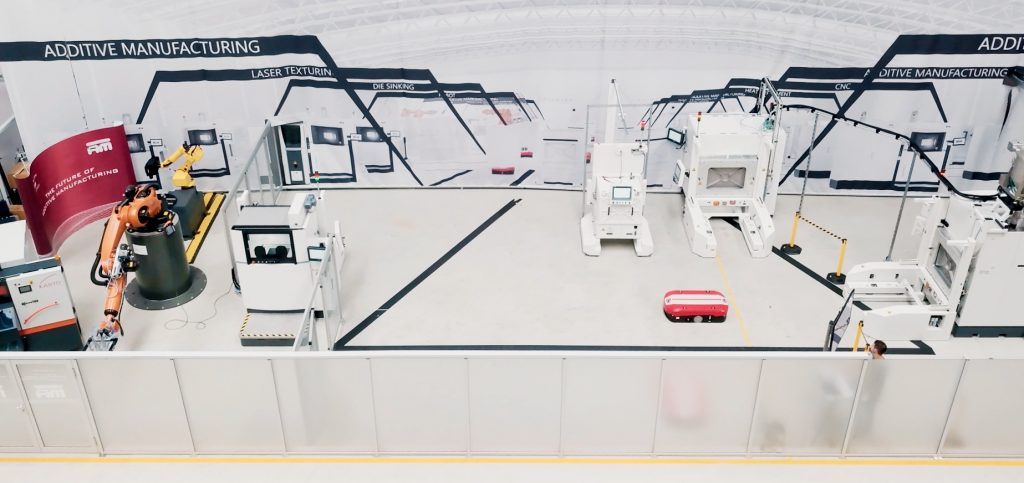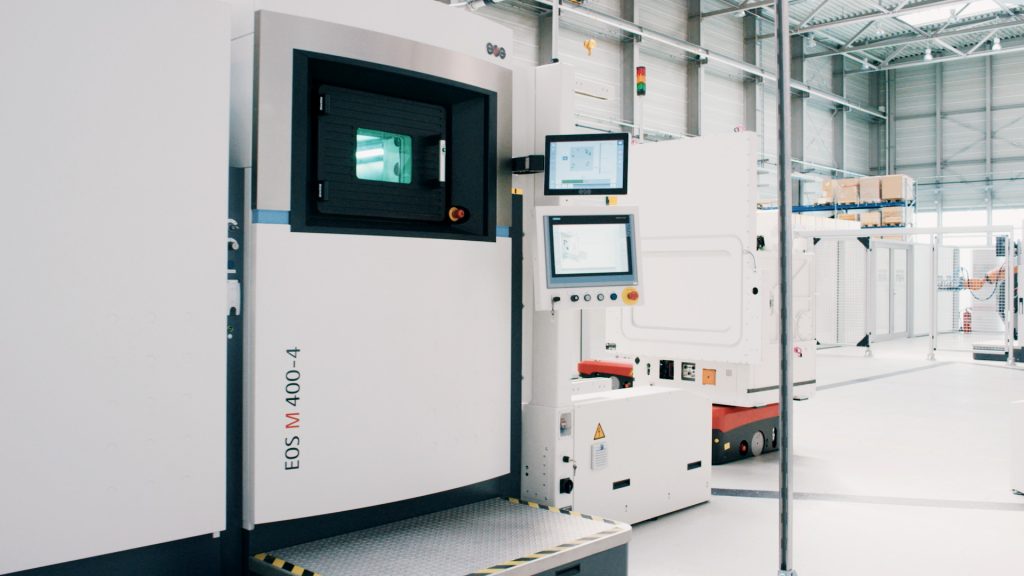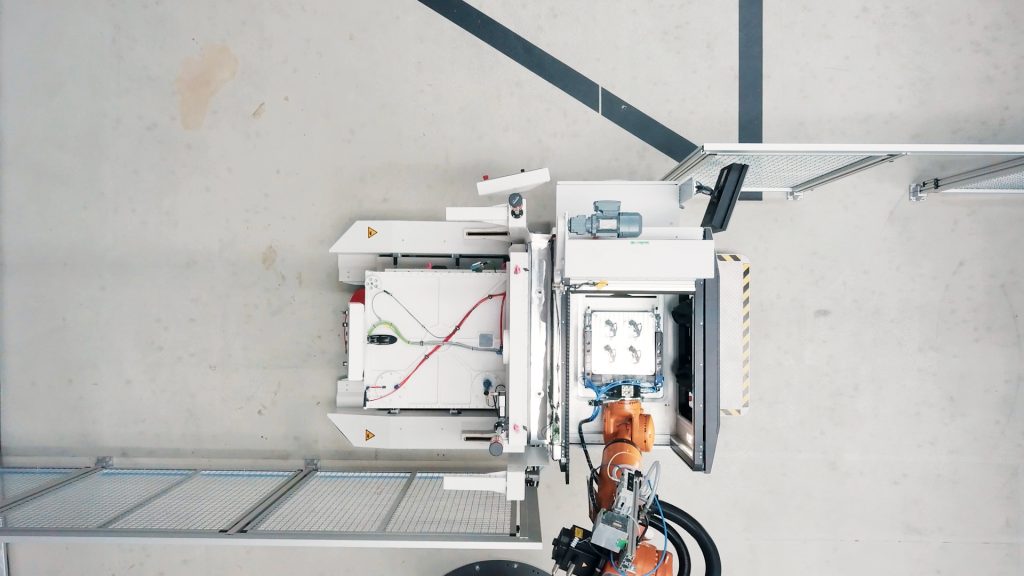The Next Generation Additive Manufacturing (NextGenAM) project from industry partners EOS, Daimler and Premium AEROTEC is complete. Launched Spring 2017, NextGenAM sought to develop a digital, fully automated production line for serial additive manufacturing. Now the pilot plant in Varel, North West Germany, is completed, and will act as an example to other enterprises seeking to integrate 3D printing into manufacturing at scale.
Dr. Adrian Keppler, EOS CEO, comments, “We are very proud of what we have been able to achieve in collaboration with our partners Premium AEROTEC and Daimler.”
“The NextGenAM project has provided a very tangible demonstration of how industrial 3D printing can be used cost-effectively in series production as part of an automated process chain.”
The first parts serially produced for NextGenAM
The NextGenAM pilot plant focuses primarily on the production of aluminum parts for automotive and aerospace applications. The facility also makes provisions for the use of Scalmalloy, a scandium alloy produced by Airbus subsidiary APWORKS.
All stages of the process are automated, from powder handling, through print bed removal and post processing, to quality inspection. As demonstrated in an early concept drawing of the project’s factory, parts are transported from machine to module by driverless robots. The partners state, “The entire production process runs itself, without operating personnel, from a central, autonomous control station.”

A digital twin of the factory is simulated alongside this system and can be accessed remotely by factory personnel. The data string behind the digital twin also makes the facility scaleable, making it possible to practically copy and paste the same system of machines in order to increase capacity.
Additive manufacturing at the core of this factory is provided by the quad laser EOS M 400-4 system. The first part to be produced on the line is a replacement bracket for diesel engines made by aerospace manufacturer Premium AEROTEC. Through analysis of production data, the NextGenAM factory could reduce the cost of manufacturing equivalent components by up to 50%.

Dr. Thomas Ehm, Chairman of the Executive Board of Premium AEROTEC, comments, “As far as the aircraft industry is concerned, Premium AEROTEC is today already an international pioneer in the field of metallic 3D printing.”
“The aim now is to build further on this expertise and to bring it to bear in other sectors as well. The successful conclusion of NextGenAM thus represents another important building block in our strategy.”
Driving toward automotive
The Varel facility is now due to undergo an audit – a prerequisite of series production for partner Daimler. With that completed, the collaboration will look toward developing serially 3D printed components for conventional and electric vehicles. The vision, eventually, for Daimler is to build a Digital Stock which will produce replacement parts on demand. Jasmin Eichler, Head of Future Technologies at Daimler AG, comments, “3D printing […] makes particular sense during the advance development of vehicles.”
“The low numbers required can often be produced more cost-effectively, and faster, with additive manufacturing than with conventional production processes.”
“[The technology] is also suitable for smallest-series production of new vehicles (limited editions). Systematic development of the parts specifically for 3D printing means that the production costs can be further reduced and the quality optimized.”

Vote for your Aerospace or Automotive Application of the Year in the 2019 3D Printing Industry Awards.
For project updates and more additive manufacturing news, subscribe to the 3D Printing Industry newsletter, follow us on Twitter and like us on Facebook. Seeking a new job? Make a profile to attract leading employers on 3D Printing Jobs now.
Featured image shows a sketch of EOS’s “NextGenAM” factory concept. Image via Premium AEROTEC, EOS and Daimler



